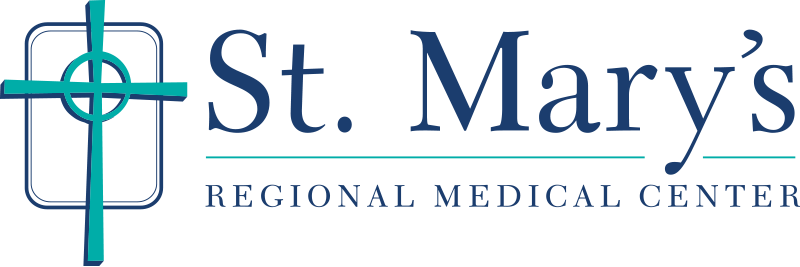Treating Digestive System Disorders
Gastroenterology focuses on the causes, prevention, diagnosis and treatment of diseases of the digestive system. The organs of the digestive system include the esophagus, stomach, small intestine, colon and rectum, pancreas, gallbladder and bile ducts. St. Mary's Regional Medical Center gastroenterologists evaluate the following signs and symptoms to find their root cause:
- Abdominal pain
- Acid reflux or heartburn
- Bloating or gas
- Blood in vomit or stool
- Constipation
- Diarrhea
- Difficulty swallowing
- Indigestion
- Nausea
- Vomiting
Testing for Gastrointestinal Problems
Diagnosing your symptoms is the first step to obtaining successful treatment. A St. Mary's gastroenterologist will likely do a combination of the following: review your medical history, conduct a physical exam and order lab tests. Among the tests conducted may be:
- Colon cancer screening (colonoscopy, sigmoidoscopy)
- Lab tests that look for blood in the stool
- Imaging tests that help your physician see how your digestive system processes food and waste
- Tests that help show the strength and function of muscles in the esophagus, rectum, or anus
Managing Gastrointestinal Disorders
St. Mary's gastroenterologists manage common conditions, such as heartburn and stomach ulcers, as well as more complex diseases including:
- Esophageal conditions, such as gastroesophageal reflux disease (GERD) and esophagitis
- Autoimmune conditions, such as celiac disease and inflammatory bowel disease
- Liver diseases, such as hepatitis, fatty liver disease and cancer.
Colon Cancer Screening
St. Mary's gastroenterologists screen for cancer using colonoscopy or flexible sigmoidoscopy. In both of these procedures, the physician can both screen for colon polpys and remove them. Polyps are small growths that can become cancerous over time. Removing polyps can help prevent colorectal cancer from ever starting. Cancers found in an early stage, while they are small and before they have spread, are more easily treated. Nine out of 10 people whose colon cancer is discovered early will be alive five years later according to The American Cancer Society, and many will live a normal life span and possibly never be affected by the cancer again.
Colonoscopy
Colonoscopy is a procedure used to look for pre-cancerous, early cancerous or cancerous lesions in the colon. During colonoscopy, the physician will look inside of the entire colon and rectum for polyps, which are small growths that can become cancerous over time. A colonoscope — a thin, flexible, hollow and lighted tube that has a tiny video camera — is gently eased into the colon while you are under anesthesia; the camera sends pictures to a monitor that is viewed by the physician. Small amounts of air are puffed into the colon to keep it open and let the physician see clearly. The exam takes about 30 minutes and is painless due to the anesthesia.
What is a Screening Colonoscopy?
This type of screening is performed when a person doesn't have symptoms like abdominal or stomach pain, rectal bleeding, or bowel habits such as diarrhea or constipation.
St. Mary's make it easy to get a screening:
- Call 580-249-3937 for a pre-screening interview with a registered nurse
- If you are in good health and meet the criteria, you can skip the pre-procedure physician visit, saving you time and money
- If you are not eligible for a direct scheduled screening, you will be referred to your physician or gastroenterologist prior to being scheduled.
Sigmoidoscopy
Upper Endoscopy
To evaluate symptoms of upper abdominal pain, nausea, vomiting or difficulty swallowing, your doctor may recommend upper endoscopy, which enables the physician to examine the lining of the upper gastrointestinal (GI) tract, which includes the esophagus, stomach and duodenum. This is the best test for finding the cause of bleeding from the upper GI tract. It's also more accurate than X-ray films for detecting inflammation, ulcers and tumors of the esophagus, stomach and duodenum. The physician uses a thin, flexible tube called an endoscope, which has its own lens and light source, and views the images on a video monitor.
A physician might use upper endoscopy to obtain a biopsy to distinguish between benign and malignant (cancerous) tissues. Biopsies are taken for many reasons, and your physician might order one even if he or she does not suspect cancer. For example, your physician might use a biopsy to test for Helicobacter pylori, the bacterium that causes ulcers. Upper endoscopy is also used to treat conditions of the upper gastrointestinal tract. The physician can pass instruments through the endoscope to directly treat many abnormalities — this will cause you little or no discomfort.
Endoscopic Retrograde Cholangiopancreatography
If your doctor suspects problems or blockages with bile or pancreatic ducts, he or she may ask you to undergo endoscopic retrograde cholangiopancreatography (ERCP), which is a specialized technique used to study the bile ducts, pancreatic duct and gallbladder. Ducts are drainage routes; the drainage channels from the liver are called bile or biliary ducts. The pancreatic duct is the drainage channel from the pancreas.
During ERCP, the physician will pass an endoscope through your mouth, esophagus and stomach into the small intestine. After the physician sees the common opening to the ducts from the liver and pancreas, he or she the will pass a narrow plastic tube called a catheter through the endoscope and into the ducts. The physician will inject a dye into the pancreatic or biliary ducts and will take X-rays. This will enable him or her to visualize the problem and recommend treatment.

